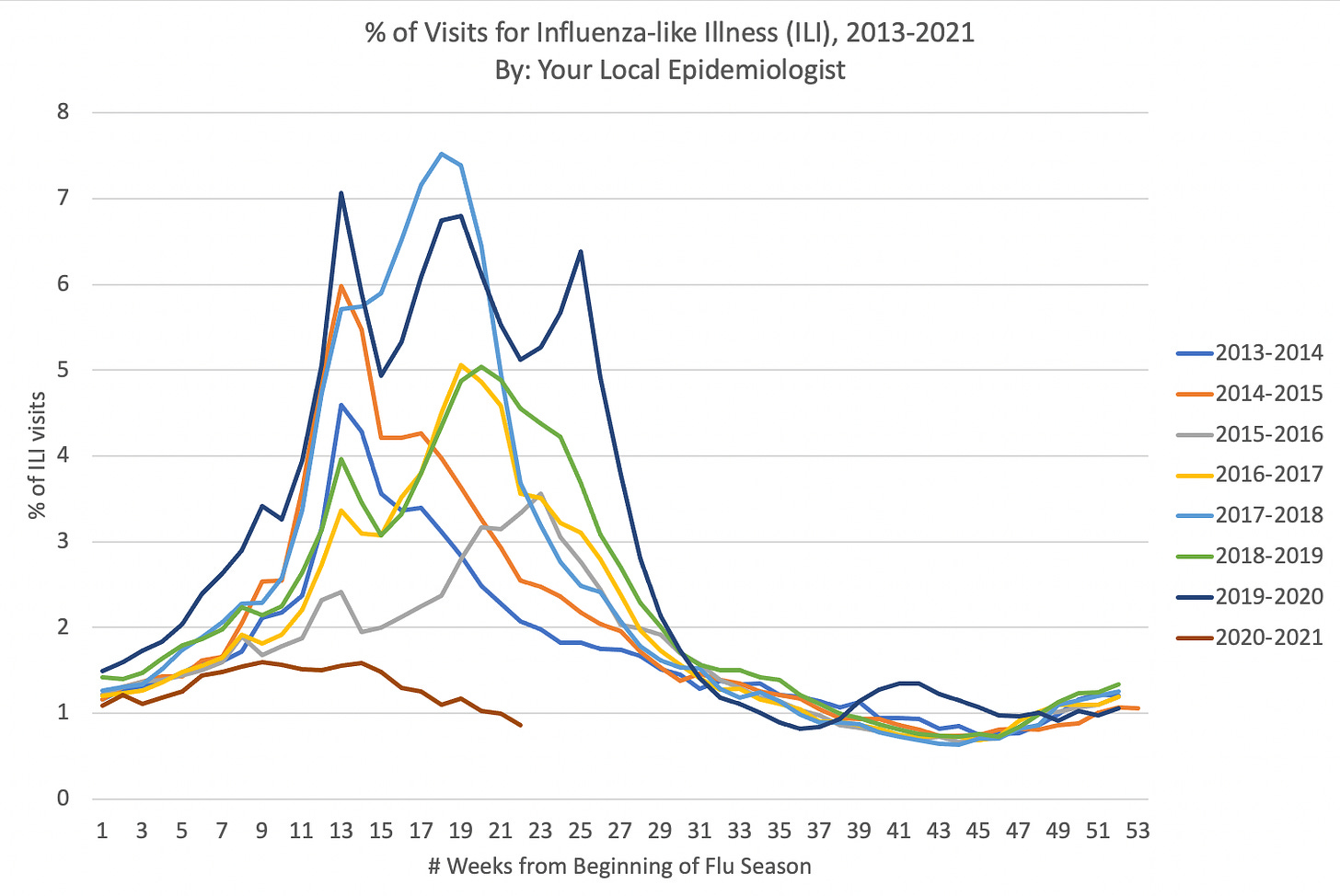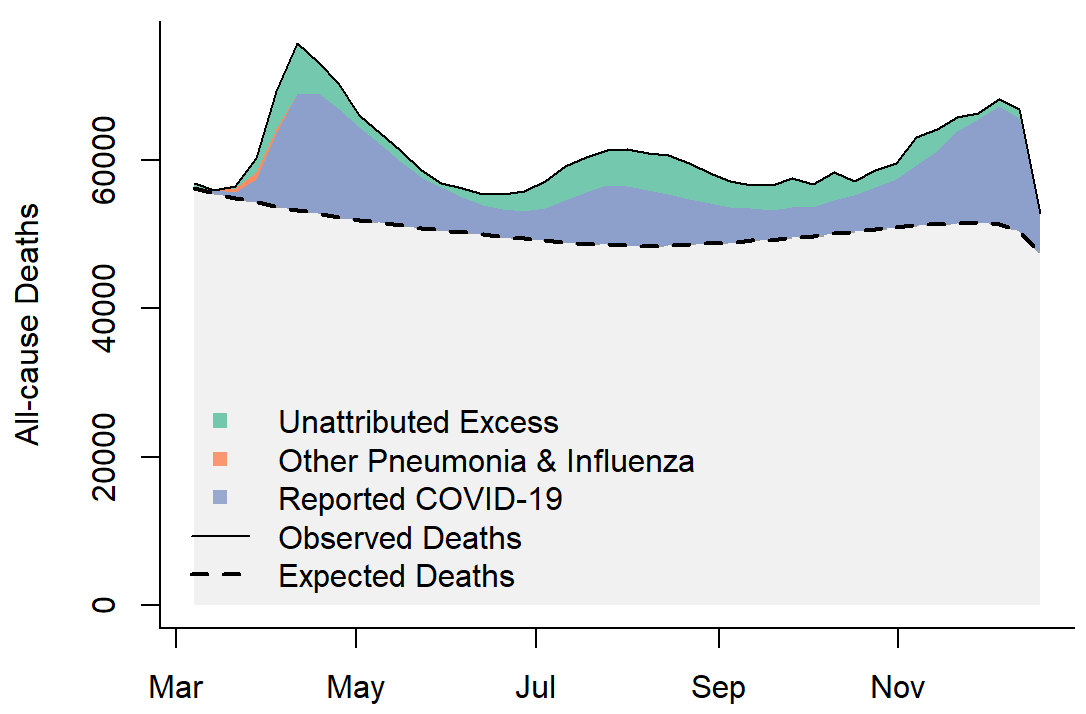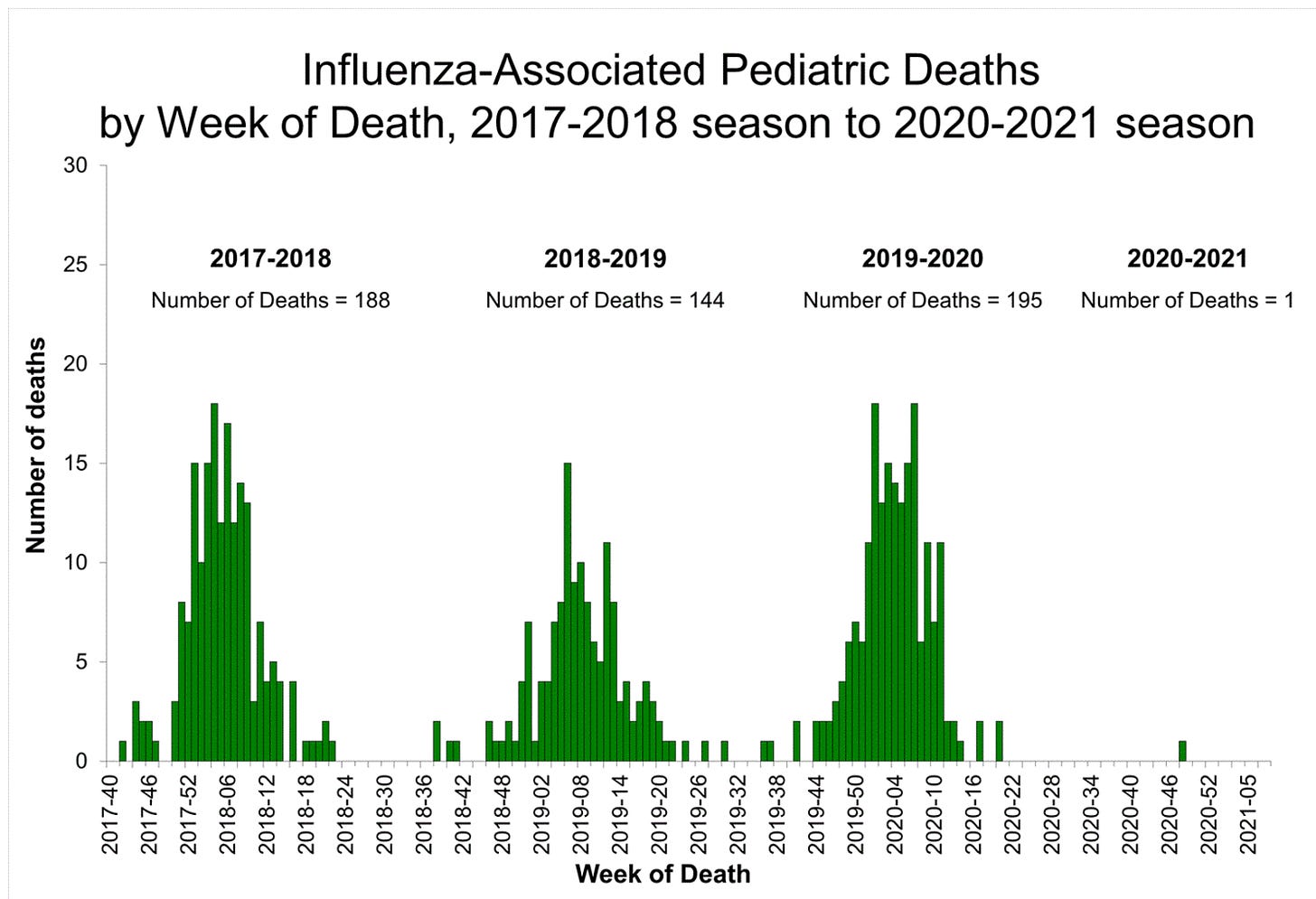COVID19 was not like the flu
The “official” flu season lasts until May, but previous flu seasons peak in February. And, as time continues to move forward, we’re getting confirmation that COVID-19 is not like the flu.
Flu is relatively easy to contain
On Sept 2020, I wrote a post explaining two hypotheses for the upcoming flu season:
The 2020-2021 flu season would be, essentially, non-existent because people are wearing masks and social distancing (due to COVID19); or
The combination of flu and COVID19 epidemics would strain the healthcare system like we’d never seen before.
The Southern Hemisphere had VERY little flu activity (whose flu season occurs 6 months before ours), so we were more confident in hypothesis #1 than #2. But, we still didn’t know for sure.
Compared to prior flu seasons, the 2020-2021 season has been non-existent. This is true in terms of cases…

And, this is true in terms of deaths. During the 2019-2020 flu season, we had 189 pediatric flu deaths. So far, this year, we have had one.
This could be due to quite a few pandemic things, like schools closed, less play dates, limiting business capacity, and increased uptake of flu vaccines. But we also know the the flu is much less contagious than COVID19 (indicated by R[0]). So, wearing masks, social distancing, and washing hands has an even more drastic impact on less contagious viruses, like influenza.
COVID19 causes long term health problems
We are also getting a better and better picture of “long COVID19” (also known as Post-Acute Sequelae of SARS-CoV-2 infection [PASC], chronic COVID syndrome [CCS] and long-haul COVID). In fact, a study came out yesterday (March 10), which found a few key things:
13.3% of people have symptoms for more than 28 days (which is the definition of long COVID19); 4.5% had symptoms for ≥8 weeks and 2.3% for ≥12 weeks.
Interestingly, they found that certain groups have a higher likelihood of long-COVID19:
Patients with more than >5 symptoms during the first week of COVID19
Older patients (aged ≥70 years compared to 18–49 year olds)
Patients with asthma
Females (compared to males)
COVID19 is more deadly
Since the flu season began (Sept 20, 2020), we’ve had 329,316 deaths from COVID19. To make sure COVID19 wasn’t just “incorrectly” counted as the flu (which, by the way, I hope we have more faith in our healthcare providers and labs than this) we can look at excess deaths in 2020-2021 compared to prior years.

Image from the Weinberger lab which can be found HERE
And there’s no doubt that we’ve had excess deaths during the 2020-2021 flu season. And this makes sense mathematically too. Infection fatality ratio (IFR) for flu is much lower (0.1%) than COVID19 (0.68%).
Important note: Flu IFR is calculated from hospitalizations. It excludes asymptomatic people or people who never get tested (which is about 65%-85% of flu cases). So, 0.1% is typically considered high for the flu. Nonetheless, if we take these imperfect numbers, COVID19 is between 2.6-6.5 times more lethal than the flu.
We will, obviously, continue to monitor the flu season (and I really hope I don’t jinx it), but there are tiny silver linings to COVID19, like a diminished flu season.
Love, YLE





